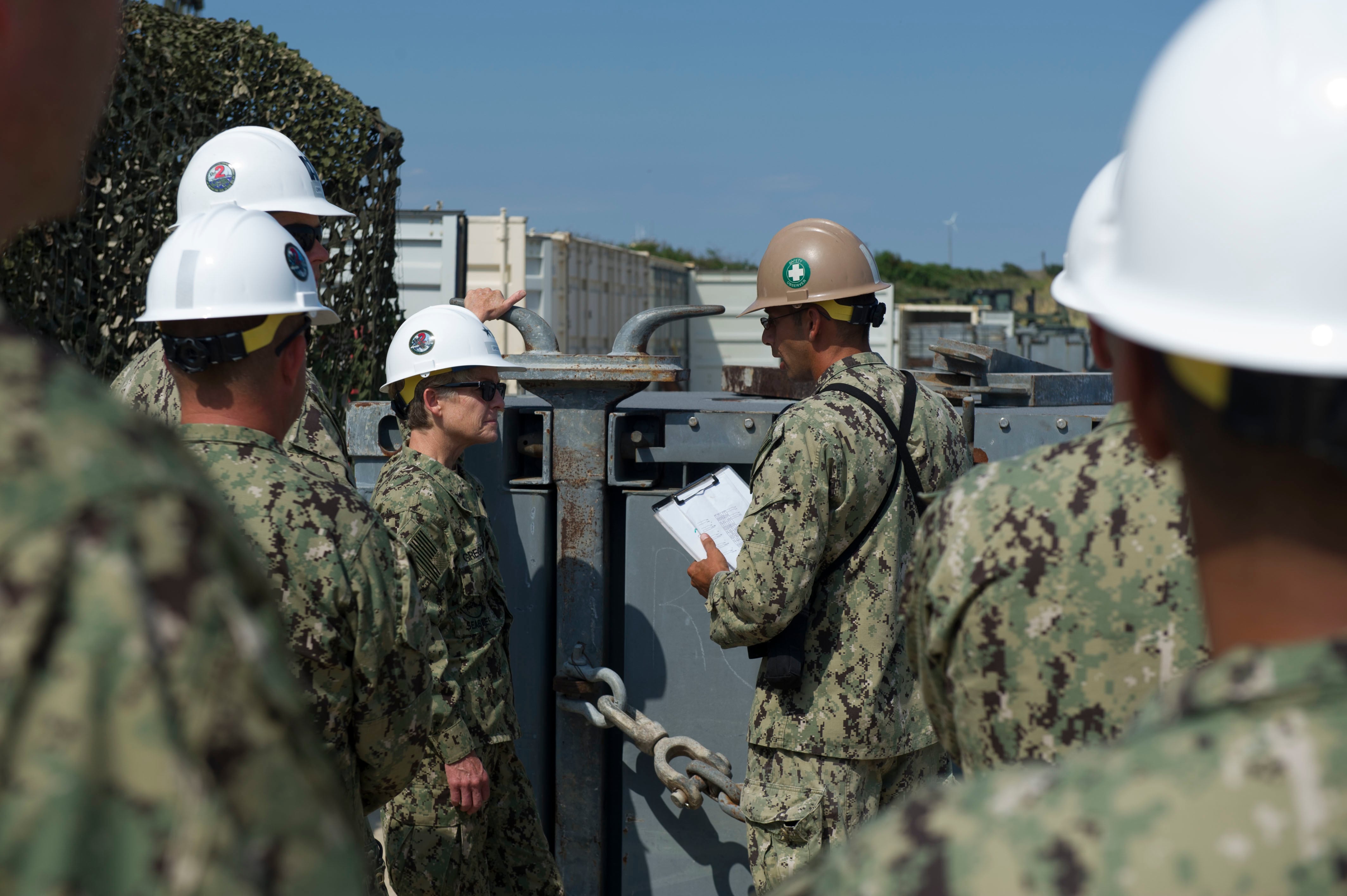JOINT EXPEDITIONARY BASE LITTLE CREEK-/FORT STORY, Virginia — A team of active duty and reserve Seabees from the East and West cCoasts have teamed up to build an expeditionary pier that has sat in storage for from four years — and it’s likely that the Navy-Marine Corps team you will need this one-of-a-kind pier in future operations.
With a reach of 3,000 feet, a width of 72 feet, the $60-million Elevated Causeway System (commonly called the ELCAS) is designed to provide over-the-horizon logistics to places where port facilities are damaged or don’t existexistent. While various floating piers are more common, they also become unusable in high seas states three and four. ELCAS sits a safe 7 feet above high tide.
"You pretty much have to drag [the floating systems] off the beach and place them in some sort of safe haven," said Lt. John Orr, the man in charge of this ELCAS build. "This system just smiles and says, 'Keep coming.' So it is a perfect Seabee system."
Indeed, hurricanes have increasingly hampered humanitarian aid, and combat can cripple port operations. As China builds air strips and outposts on reefs and islands in the South China Sea, many Pacific allies look to respond by building fortifications on desolate islands. Despite this potential demand, the ELCAS modular pier remains the only one in the world, and only 80 sailors are qualified to build it (a number that will double by the end of September). The system can be used to rapidly deliver vehicles and cargo ashore in an amphibious operation, for example.
Navy Enlisted Classification, or NEC code, requires A three-day class and an actual build are needed to earn the Navy enlisted classification to be included in this group. To meet this requirement, sailors from Amphibious Construction Battalions 1 and 2, and Naval Beach Group 2, set out to build 480 feet of ELCAS pier at Anzio beach. The build will see teams in action day and night, seven days a week, and will run through Labor Day. Disassembly is expected to wrap up by the end of September, and you can be sure the bean counters are keeping a close eye on the cost, as officials are already looking at a larger build next year.

Rear Adm. Katherine Gregory speaks to Steelworker 2nd Class Elias Mrich during her visit to the Elevated Causeway System (ELCAS) Exercise on board JEB Little Creek.
Photo Credit: MC2 Taylor Mohr/Navy
The number of qualified Seabees is due largely to a 2011 Navy decision to pause ELCAS builds while it analyzed operational cost and other options. Soon after taking the helm at Amphibious Construction Battalion 2, Capt. Marc Delao pushed ELCAS as one of the unit's major mission sets, and got the green light to resume training. By that time, Seabees had seen one-third of the active force and half the reserve cut, so the ELCAS team has to rely on active and reserve Seabees from both coasts.
As such, the biggest challenge is not to build a pier, but to build the team, said Chief Equipment Operator (SCW) Aaron Paro. The 22-year vet helped build the pier in Kuwait in 2003, which remains the only wartime use of the modular pier. only use during a contingency operation. That pier supplied the newly built, 5,000-man Camp Patriot. It extended roughly 1,800 feet and took 75 Seabees 13 days to build.
"Teamwork is big out here," said Paro, who serves as operations chief for Charlie Company, PHIBCB-2. "You have to match up guys with the experience and skill with the ones who don't have that. Skills can be taught, but being able to integrate from such a wide variety of people is most important when you look to build a crew that is efficient out here."
Seabees can take the pier’s components ashore using a specialized-by-120 foot barge ferry. The ELCAS connects 40-by-8 foot pontoons that weigh 25,000 pounds, while 38-foot steel "sticks" welded on site enable it to bear an unmatched 200,000 tons. It can accommodate two turntables, each of which holds a 160-ton crane capable of offloading any gear. Pier length extends only to the water depth needed for the delivery vessel.
For many khakis, the key challenge for such a build is to maintain a good flow from the marshalling yard to the pile yard, where the 38-foot sticks are positioned. "You have to feed this monster," Paro said. "As soon as you stop feeding that crane, everything stops."
For Orr, the khakis were key.
"At the [Naval] Academy, they always pushed, ‘Junior officer, listen to your chiefs!’ And they were absolutely right," said Orr, who had plenty from which to choose. Among the chiefs there stood someone who had participated in every build in the pier’s 19-year history.
"There is an incredible amount of institutional knowledge all over this beach," Orr said. "Now we have to pass that on to the young petty officers, and we have to make sure they maintain that skill. We have to just keep building it."



